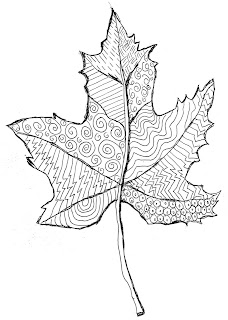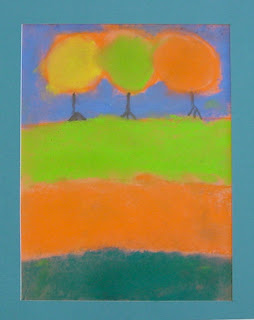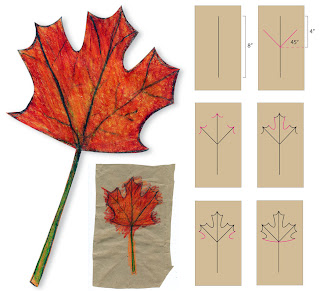 This student art was sent in by Laura Kim of Roswell, Georgia. She was writing to share what her students did with my Landscape Collage project, and I just adore the results, so whimsical and colorful. I would challenge any professional artist to match the personality shown in these. Below is Laura’s description of how her students created their art.
This student art was sent in by Laura Kim of Roswell, Georgia. She was writing to share what her students did with my Landscape Collage project, and I just adore the results, so whimsical and colorful. I would challenge any professional artist to match the personality shown in these. Below is Laura’s description of how her students created their art.“First day we talked about landscapes and I had the kids paint a 9x12 paper with turquoise tempera cakes. After that, we talked about painting pages from an old book in an effort to recycle. I also talked about getting permission to rip up an old book. I demonstrated to the children how to paint one page green, one page yellow and then another page any ONE color of choice except for black (we used watercolors). If the kids finished all of this, then I kept allowing them to come and get pages to paint ONE color of choice until time ran out.
"The second week I placed their turquoise paper at their seat along with a yellow and green page (we painted as a collaborative effort). We discussed collage and I demonstrated how to cut out simple shapes and glue. They were allowed to come and get pages of other colors from the front table once they completed the grass and sun. We also did a lot of sharing!
"The third week we used a thick sharpie marker and outlined our shapes and added doors and windows if there were not cut and glued.”
Thank you so much Laura for sharing this inspirational work!
"The second week I placed their turquoise paper at their seat along with a yellow and green page (we painted as a collaborative effort). We discussed collage and I demonstrated how to cut out simple shapes and glue. They were allowed to come and get pages of other colors from the front table once they completed the grass and sun. We also did a lot of sharing!
"The third week we used a thick sharpie marker and outlined our shapes and added doors and windows if there were not cut and glued.”
Thank you so much Laura for sharing this inspirational work!


 9:59 PM
9:59 PM
 keprok
keprok





























